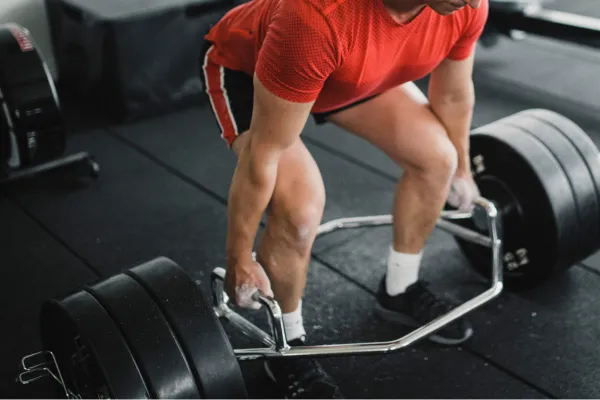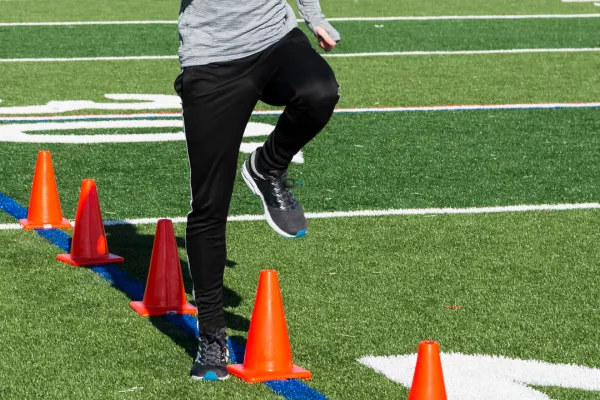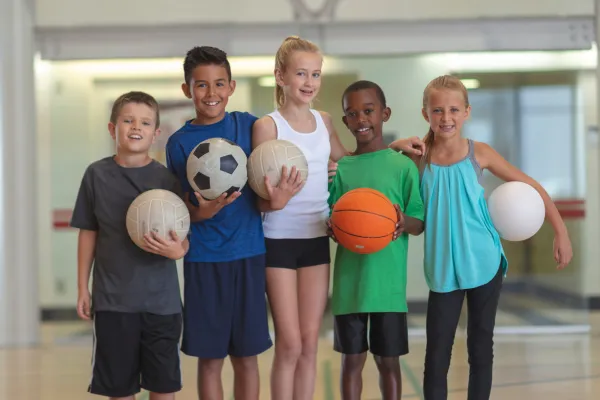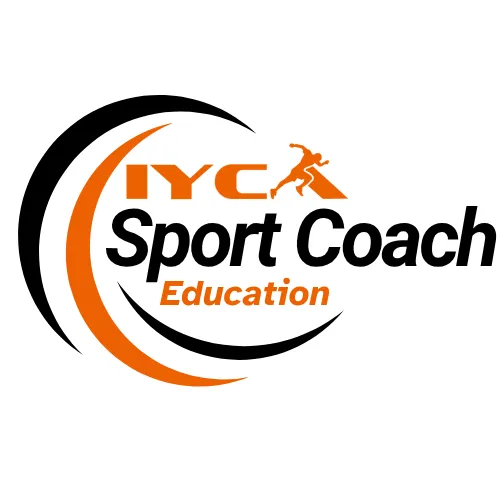
A Proactive Approach To Injury Resilience in Youth Sports
In the realm of athletic coaching, a prevalent misstep is adopting a reactive stance toward injury management, addressing strength training and rehabilitation only after an injury has occurred. Scientific evidence underscores the importance of a proactive approach, emphasizing consistent strength training, comprehensive warm-ups, and modern recovery strategies to prevent injuries and facilitate efficient recovery.
Building Strength: A Proactive Defense Against Injuries
A robust foundation in strength training is instrumental in reducing the risk of sports-related injuries. A systematic review by Lauersen et al. (2018) demonstrated that increasing strength training volume by 10% can lead to a more than 4% reduction in injury risk . This dose-response relationship highlights the efficacy of regular strength training in injury prevention.PubMed+1SAGE Journals+1
Despite this evidence, many coaches prioritize strength training only after an athlete sustains an injury. This reactive approach overlooks the preventive benefits of continuous strength conditioning. Maintaining year-round strength training not only decreases injury incidence but also accelerates recovery when injuries do occur, as a well-conditioned body possesses greater resilience and healing capacity.
Early Intervention: Addressing Discomfort to Minimize Downtime
Encouraging athletes to “push through” discomfort can exacerbate minor issues, potentially leading to severe injuries and extended periods away from sport. Implementing early intervention strategies is crucial; addressing discomfort promptly can prevent the progression of injuries and reduce overall time lost. Studies indicate that comprehensive exercise programs can significantly diminish the occurrence of overuse injuries, underscoring the importance of early and proactive measures .SpringerLink
Leveraging Athletic Trainers: Collaborative Care for Optimal Performance
Athletic trainers (ATs) are pivotal in the continuum of athlete care, aiming to keep athletes active while ensuring safe recovery. Their role is often misunderstood, leading to underutilization. A common misconception among coaches is that athletic trainers are just waiting to bench athletes at the first sign of injury. This couldn’t be further from the truth! Athletic trainers work tirelessly to keep athletes in the game while ensuring they recover properly.
An AT’s goal is to maximize an athlete’s ability to practice, train, and compete safely. Even when an athlete is injured, there is almost always something they can do to stay active and maintain their conditioning. Keeping athletes engaged in movement during recovery helps them return stronger and faster.
Engaging with ATs fosters a collaborative environment that benefits individual athletes, coaches and the team as a whole.
Take Your Athlete Care to the Next Level
Injuries are an inevitable part of sports, but how you handle them can make all the difference in an athlete’s performance and long-term health. Imagine having direct access to an experienced Athletic Trainer whenever you need guidance, whether it’s assessing an injury, making return-to-play decisions, or implementing better injury prevention strategies.
The IYCA has you covered, offering Athletic Trainer (AT) Consulting Services for coaches, travel organizations, and performance facilities. With this program, you can have an Athletic Trainer on call—available by text, email, or phone—to help navigate injuries in real time.
Don’t leave your athletes’ health to guesswork. Email [email protected] to learn more about the IYCA’s AT Consultant Program and how it can support your team and athletes.
Rethinking Recovery: Embracing the PEACE & LOVE Protocol
Traditional injury management has long adhered to the R.I.C.E. method (Rest, Ice, Compression, Elevation). However, contemporary research advocates for the PEACE & LOVE approach, which aligns more closely with the body’s natural healing processes .bodylogics.co.uk+1Davis & DeRosa+1
PEACE – Immediate Care Post-Injury
P-Protect: Limit movement for 1–3 days to minimize bleeding and prevent aggravation.Davis & DeRosa+2British Journal of Sports Medicine+2Summit Orthopedics+2
E-Elevate: Raise the injured area above heart level to reduce swelling.
A-Avoid Anti-Inflammatories: Refrain from using anti-inflammatory medications and ice, as inflammation is a vital component of healing.Latest news & breaking headlines+6British Journal of Sports Medicine+6Davis & DeRosa+6
C-Compress: Apply pressure to manage swelling and provide support.
E-Educate: Inform athletes about their injury and the recovery process to set realistic expectations.
LOVE – Subsequent Management
L-Load: Introduce pain-free activities early to promote tissue repair.Dorset County Hospital | Home
O-Optimism: Maintain a positive outlook to enhance recovery outcomes.
V-Vascularization: Engage in cardiovascular activities to boost blood flow and aid healing.
E-Exercise: Implement tailored exercises to restore mobility, strength, and function.
This paradigm shift emphasizes active recovery and patient education, moving away from passive treatments that may impede the natural healing process.
Active Recovery: The Role of Movement in Healing
Complete rest is seldom the optimal solution for injury recovery. Engaging in controlled, pain-free movements can expedite healing by enhancing circulation and preventing deconditioning. Muscle contractions facilitate lymphatic drainage, reducing swelling and discomfort. Activities such as swimming, cycling, or targeted strength exercises can be adapted to accommodate injuries, ensuring athletes remain active and connected to their training regimen.
The primary mistake coaches make in managing injured athletes is adopting a reactive rather than proactive approach to strength training and injury prevention. By integrating consistent strength conditioning, addressing discomfort early, collaborating with athletic trainers, and embracing modern recovery protocols like PEACE & LOVE, coaches can significantly reduce injury rates and enhance athlete performance. Prioritizing proactive strategies not only safeguards athletes’ health but also contributes to the overall success and cohesion of the team.
About the Author
Erin McCormick MS, LAT, ATC, PES, PCES
In the field for 20+ years, Coach Erin has worked with 1000’s of athletes, coaches and physicians in the clinical, collegiate and high school settings. Erin partners the IYCA as a contributor and Athletic Trainer (AT) Consultant, to support our coaches, trainers and parents keep athletes safe. Your athletes are in good hands with Coach Erin.
Email [email protected] to learn more about the AT Consultant Program for your team, organization or athlete.
References
Dubois, B., & Esculier, J.-F. (2020). Soft-tissue injuries simply need PEACE and LOVE. British Journal of Sports Medicine, 54(2), 72–73. https://doi.org/10.1136/bjsports-2019-101253
Lauersen, J. B., Andersen, T. E., & Andersen, L. B. (2018). Strength training as superior, dose-dependent and safe prevention of acute and overuse sports injuries: A systematic review, qualitative analysis and meta-analysis. British Journal of Sports Medicine, 52(24), 1557–1563. https://doi.org/10.1136/bjsports-2018-099078
The information provided in this article is for educational and informational purposes only and is not intended as medical advice. While efforts have been made to ensure the accuracy and reliability of the content, readers should not use this information as a substitute for professional medical evaluation, diagnosis, or treatment.
Coaches, athletes, and other individuals should consult with a licensed athletic trainer, physical therapist, or medical professional before implementing any injury prevention, rehabilitation, or recovery strategies discussed in this article. Every athlete and injury is unique, and individual assessments are necessary to determine the best course of action.
The authors and publishers of this article assume no liability for any injuries, complications, or other consequences resulting from the use of information presented herein. Always seek professional guidance when dealing with sports injuries or health-related concerns.








